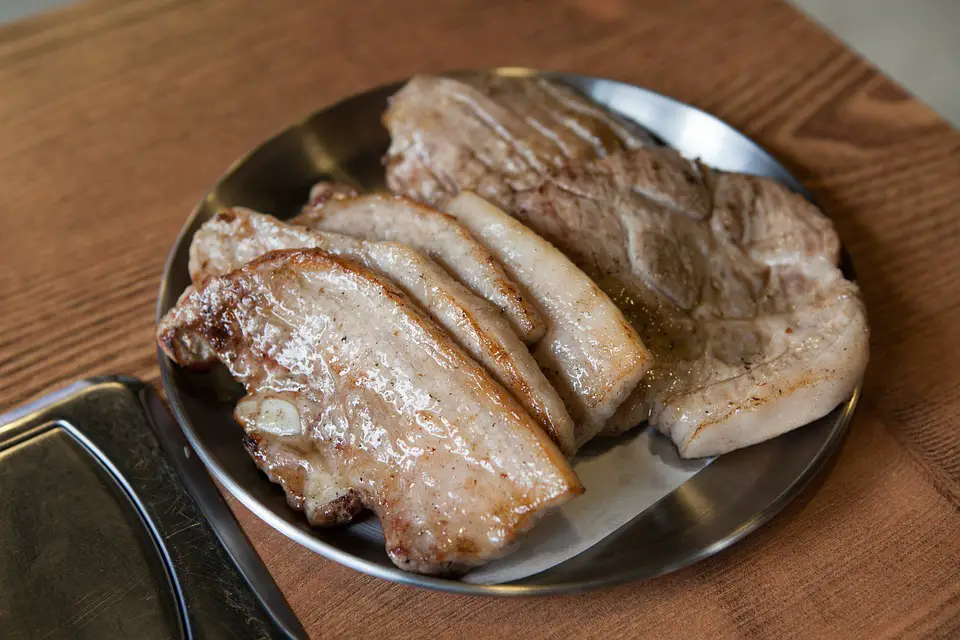Here is what you need to know about reheating pork and making sure it is safe to eat.
Pork is a lean, versatile meat that can be used in everything from slow-cooked pulled pork to quick weeknight stir fries. Like any meat, leftovers are common. This leaves many home cooks wondering – should you reheat pork and if so, how do you do it safely?
According to food safety experts at the USDA, pork can be safely reheated as long as proper guidelines are followed. But undercooking or reheating multiple times can increase the risk of foodborne illness. Here is a detailed guide on the dos and don’ts for safely reheating delicious pork leftovers.
How Many Times Can Pork Be Reheated?
A common question is how many times pork can be reheated before it becomes unsafe. According to the USDA pork should only be reheated once. Reheating it more than that gives bacteria like salmonella more opportunities to multiply to dangerous levels. For optimal safety and quality leftovers should only be reheated a single time before discarding.
Oven Reheating is the Gold Standard
One of the best and safest methods for reheating pork is using the oven The ambient heat allows the pork to warm gradually and evenly throughout Follow these steps
- Preheat oven to 350°F.
- Place pork in a baking dish and cover tightly with foil. For extra moisture, add a bit of broth.
- Heat for 15-20 minutes until the internal temperature reaches 165°F. Check with a meat thermometer.
The covered dish prevents the exterior from drying out. The low, steady oven heat reheats the pork perfectly without overcooking.
Stovetop Reheating Done Right
Besides the oven the stovetop can be used to safely reheat pork. Use these steps for the best results
- Choose a sauté pan or skillet large enough to hold the pork without crowding.
- Add a small amount of oil, butter or other fat. Heat over medium.
- When hot, add pork. Cook for 2-3 minutes per side until heated through to 165°F.
Monitor the temperature closely so the pork doesn’t overcook. And resist the urge to keep reheating the same leftovers over multiple days.
Is Microwave Reheating Recommended?
While microwave reheating is quick, it can create hot and cold spots. Use caution with these steps:
- Arrange pork in a microwave-safe dish in a single layer. Loosely cover.
- Microwave at 50% power in 30 second intervals until 165°F. Allow to rest 1 minute before eating.
The lower power and rest time allows heat to distribute evenly. For best results, use the oven or stovetop to reheat pork if possible.
Helpful Tips for Safely Reheating Pork
Keep these tips in mind when reheating pork:
- Only reheat leftovers once, do not keep reheating the same portions over multiple days.
- Use a food thermometer to confirm the internal temperature reaches 165°F.
- Bring sauces, soups, gravies to a boil when reheating.
- Discard pork left out at room temperature for over 2 hours before reheating.
- Refrigerate leftovers in shallow containers for quick cooling.
- Consume within 3-4 days and do not refreeze reheated pork.
Signs Your Pork Has Spoiled
Watch for these red flags that pork has gone bad and should be thrown out:
- Slimy texture
- Grayish color
- Ropy strands when poked
- Off odors
- Mold growth
When in doubt, play it safe and discard questionable pork. Don’t risk eating spoiled leftovers.
Creative Ways to Use Leftover Pork
If reheating seems unappealing, get creative with leftovers!
- Shred then add to salads, nachos, baked potatoes
- Dice and mix into omelets or breakfast hash
- Stir into skillet pasta, fried rice or ramen
- Fold into tot dishes like casseroles, pasta bakes or stir fries
The Takeaway – Reheat Pork Properly
According to food safety experts, pork can be safely reheated, but proper guidelines should be followed. Only reheat leftovers once and to an internal temperature of 165°F. Monitor for signs of spoilage and when in doubt, throw it out. Repurposing leftovers in other dishes is also an option. Follow these simple rules when reheating pork to enjoy delicious meals without the risk.

Can you reheat pork?
The pork you want to reheat should have been kept in the fridge or freezer for three days and should have been put away after two hours of cooking.
You can heat pork in the microwave, oven or hob.
As long as the pork is still hot, don’t let it get too cold. This will keep it from getting bacteria on it.
Keep in mind that meats like roast pork or pork chops may become a bit drier and tougher after being reheated.
Read More on Food

This does not mean that it is not safe to eat.
What is the best way to reheat pork?
The best way to reheat pork is by using the microwave or hob.
However, during the hot summer days, you can light up the barbecue and reheat there.
Make sure that when reheating pork, the meat is hot throughout.
Can I Reheat A Whole Pork Butt For Pulled Pork? – How To Reheat Smoked Pulled Pork | Reheating BBQ
FAQ
Can you reheat already cooked pork?
Can you eat cooked pork cold the next day?
Is it OK to eat leftover pork?
What’s the best way to reheat pork without drying it out?
